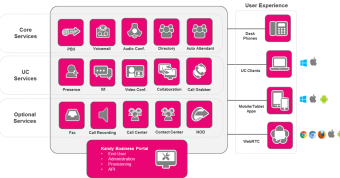When Customers Choose Their Channels 24/7 Brands Turn to Omnichannel Experiences Blending Automation and Live Agents
In today’s always-on world, people are more connected than ever, moving more and more of their conversations to messaging apps and social media, blurring the lines between business and personal communication. Phone calls and conferences have been swapped out for services like Facebook Messenger, WhatsApp, Viber and Google Hangouts and conversations are now continual and contextual.
How can contact centers adapt, and which new technologies can organizations and their contact center partners adopt to compete in the increasingly important Customer Experience (CX) space?
This shift in the way people choose to interact – in both their personal and professional lives – is causing companies to change the way they do business and, subsequently, the way they interact with customers in order to better fit their unique preferences. The fact is – customers can now choose their channel – or channels – whether calling in to speak with a live agent, interacting with a chat bot, or looking up answers to their questions on a well-designed webpage.
Communications Platform as a Service (CPaaS) plays a huge role in this transformation, and in the innovation that creates differentiating CX in a competitive world.
Learn about our CPaaS Platform
Context matters.
CPaaS integrates real-time contextual communications (voice, video, messaging, chat, presence and collaboration) into any app, service, website, social media presence, or business process. Some examples include enabling customers to chat or click-to-call to interact with a customer service agent instead of relying on a backlogged customer service hotline.
This ability to embed communications capabilities directly into apps or websites enables brands to engage customers more effectively across different communications channels – vastly improving the customer experience and further increasing customer satisfaction, customer loyalty and recurring revenues.

Let’s look at five examples.
In contact centers, agents can communicate with their colleagues or coaches, within the CRM application or contact center software platform they are using. The agents can also share a “call-me” web link with their customers, partners or external contacts by email or SMS and they can call agents with voice and/or video by clicking this web link and launching the call. APIs for messaging, presence, voice, video, presence and user directories makes this not only possible, but preferable as service improves, and work gets done faster.
For e-commerce domains, instant communications, whether voice, chat or messaging, can be added to a storefront in minutes. Embedding real time multimedia communications capabilities within the eCommerce omni-channel experience makes it as simple as clicking or swiping once to initiate a conversation with an agent to help complete a sale. Using screen share or co-browsing, the agent (a virtual salesperson) can provide contextual information and can convert the customer’s interest into a sale including helping the customer check out online. Benefits include improved customer satisfaction, reduced shopping cart abandonment and increased average order amount given the ability to upsell related accessories and services.
Telemedicine service providers can use embedded communications features to help patients calling in to navigate to the right doctor, nurse or specialist, and to simplify healthcare insurance processing. Not only does this help optimize workflow and improve healthcare professionals’ productivity, it can improve the patient experience and dramatically reduce costs compared to in-office or home visits. Integration with EMR systems allows data to flow securely and be captured in the patients’ records automatically. Client-side voice recording makes hand-written doctors’ notes a thing of the past. The time saved is money saved, and time better spent with patients rather than paperwork.
Digital and distance learning is another industry ripe for UCaaS innovation. Group chat, video and voice collaboration, screen-sharing and co-browsing is leading to unprecedented improvements in productivity and the quality of the teaching and learning experience. Scalable learning also allows corporations to extend and improve training and talent development initiatives to a wider base via the cloud, which is especially attractive to large global enterprises. Collaborative conversations enable members to share their experiences and contribute to the learning process. Real-time purpose driven collaboration nurtures learning, culture, talent and teamwork.
Field service is being completely reinvented using UCaaS and embedded communications in productivity applications connecting on-site techs and experts who can help resolve issues quickly and cost-efficiently. Real-time messaging between mobile workers and dispatch operators can be easily integrated into trouble-ticketing, dispatch and technical support systems as part of business applications – not separate from them. No need to dial in when a field service professional can simply tap the app to reach the right expert, when intelligent routing is set up. The benefits, beyond cost efficiency, include faster issue resolution and enhanced customer satisfaction.
The opportunities for innovation and value creation are limitless.
Embedded Communications improves contact centers, sales campaigns, customer experience and engagement, but also makes the way we connect, communicate and get work done easier to do on-demand. These human interactions can now happen in high definition voice and video, making omnichannel choices even better for customers, patients, students, technicians, doctors, and more.
Embedded communications make broader digital transformation initiatives more exciting and can be the life blood of enhanced CX programs. Contextual, high definition, and immersive: the future of connecting in seconds with a simple touch or swipe is available now and being used by the most forward brands, companies and organizations to improve experiences, internally and externally.





